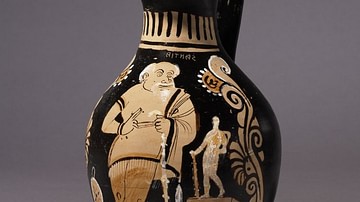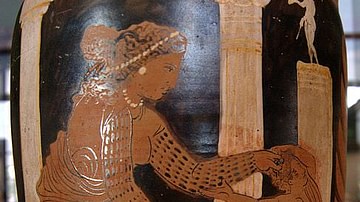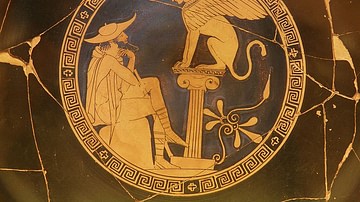The theatre of Dionysos Eleuthereus on the south slope of the acropolis of Athens was first built in the 6th century BCE. Modified and expanded over the centuries, it is the oldest Greek theatre and is the site where some of the most famous Greek plays from antiquity were first performed.
Early Form
The theatre was part of a wider sanctuary dedicated to Dionysos Eleuthereus from the Archaic period. The cult to the Greek god of wine, merriment, and theatre was brought to Athens via the nearby deme of Eleutherai, although it can be traced back to Mycenaean times. A temple to Dionysos was first constructed by Peisistratos in the 6th century CE, and a circular area of tramped earth nearby was reserved for religious ceremonies where spectators took their seats on the hillside. Eventually this space evolved into a purpose-built theatre where Greek comedies and tragedies were performed, themselves evolved from earlier religious practices which included singing, wine drinking, animal sacrifices, and the wearing of masks. The climax of the celebrations was the Great Dionysia held each year in March/April, during the month of Elaphebolion, where the most famous playwrights such as Euripides, Sophocles, and Aristophanes presented their plays in competition.
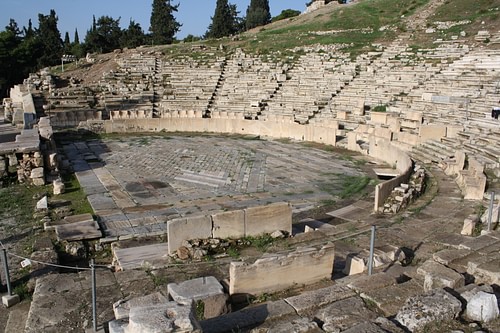
5th Century BCE Remodelling
In the 5th century BCE rows of seats were added around the performing area (orchestra), the front rows being stone and the rest of wood. These seats formed the first cavea which had flights of steps rising to the highest rows thus creating cunei or wedge-shaped sections of seats. Parodoi or large gateways were built either side of the stage giving access to spectators. A stone rectangular stage building or skene was added at the end of the 5th century BCE. The skene had paraskenia or wings on each side.
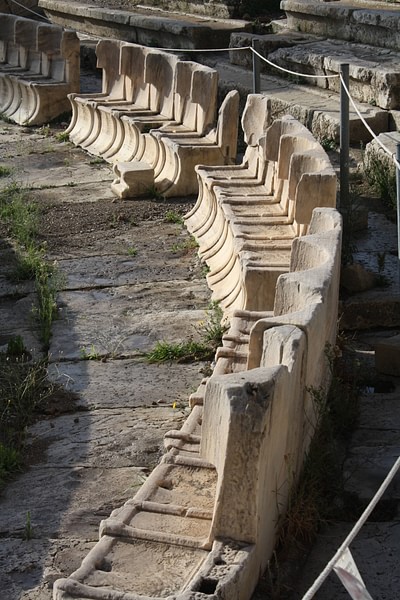
4th Century BCE Improvements
The theatre was remodelled and made much more grandiose in 330 BCE by the archon Lykourgos. Additional rows of seats using limestone from nearby Piraeus were added to the cavea, as were two extra horizontal walkways (diazoma) between seat sections giving the theatre a capacity of up to 16,000. The front row seats were made more comfortable with the addition of 67 thrones carved in marble. These seats were reserved for VIP officials who even had their names inscribed on them. One central throne in particular was more splendid than the rest and reserved for the priest of Dionysos. Lykourgos re-vamped the stone stage building, too. Sloping access ramps were also added to each side of the theatre to facilitate the emptying of the cavea after a performance. At this time three bronze statues of the great tragedians Aeschylus, Euripides, and Sophocles were erected at the main east entrance.
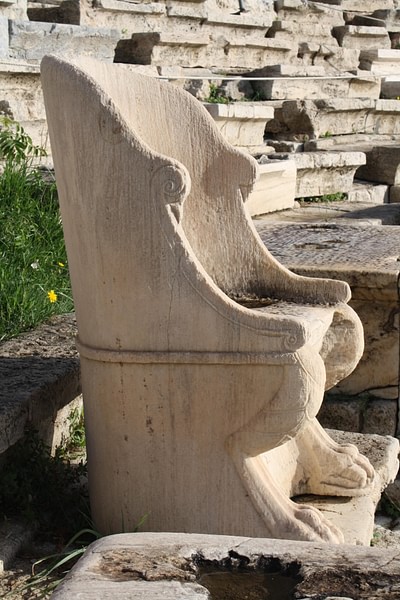
Roman Aggrandizement
In Hellenistic and Roman times the theatre continued to hold performances. The Romans, as they did to most Greek theatres across the empire, greatly enlarged the skene. Sulla's attack on the city also damaged the theatre in 86 BCE but restoration work was subsequently carried out. In the 1st century CE Nero once again added a monumental Romanesque stage building which reduced the now marble stage area to its semi-circular form still seen today. From this period six marble statues of Silenos, the aged companion and tutor of Dionysos, survive which once stood on the stage.
A low speaker's platform (bema) was added in front of the skene in the 2nd or 3rd century CE. The bema was decorated with marble reliefs depicting myths of Dionysos in the 5th century CE by the archon Phaidros and these, albeit weather-damaged, are still visible today.
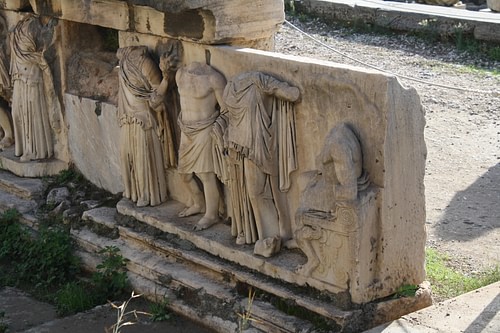
Later History
In the mid-5th century CE a Christian Basilica was constructed in the east parodos of the theatre. In the 13th century CE the theatre was incorporated into the Rizokastro fortification wall which ran around the base of acropolis. Over subsequent centuries many of the acropolis monuments, including the theatre, gradually became covered in earth fill. The theatre was first excavated in 1838 CE by the Archaeological Society of Athens, a process continued in the 1860s and again in the 1880s CE. Further excavation and some restoration of the theatre were first carried out in the 1980s CE and continue today.


